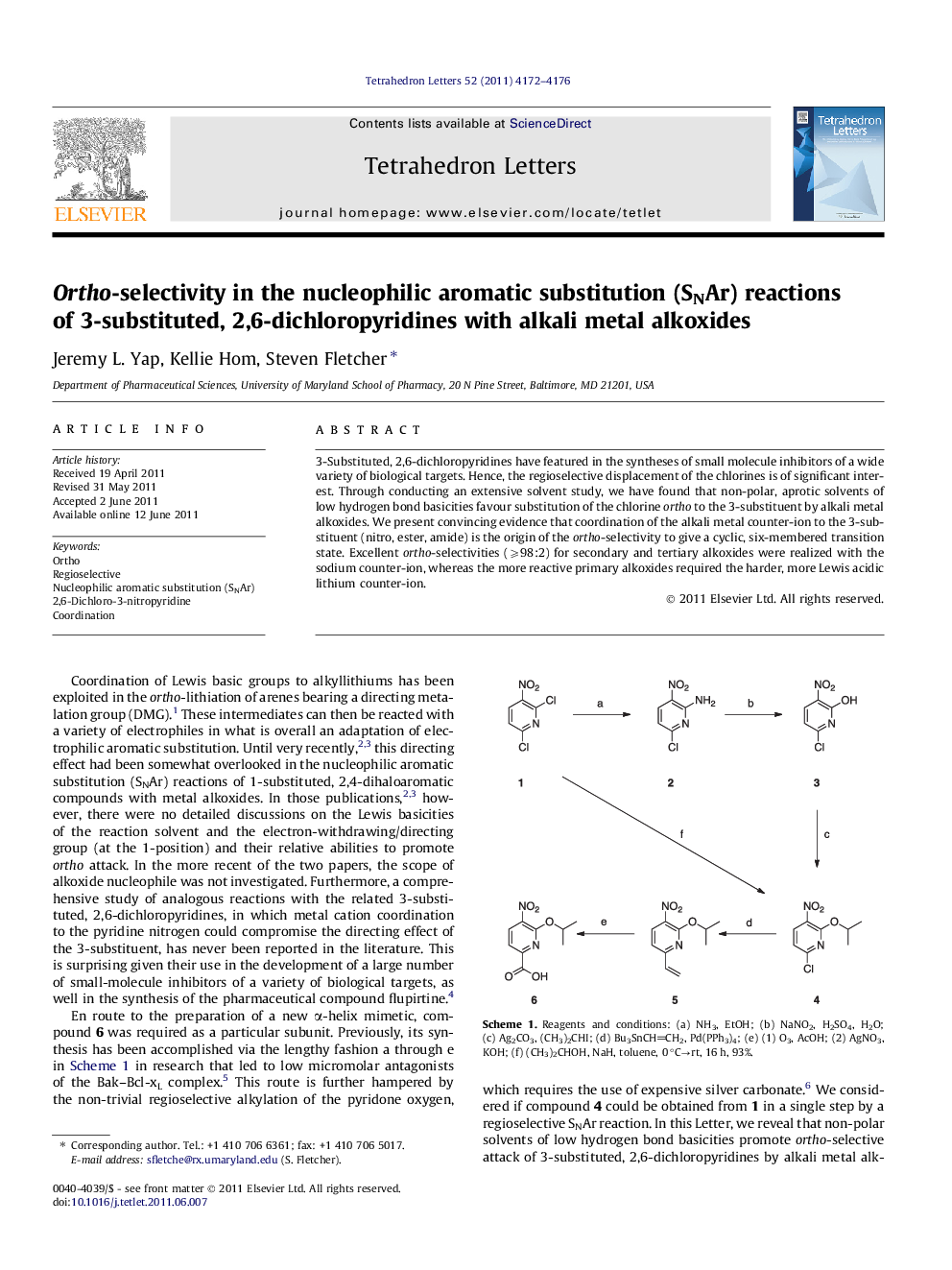| Article ID | Journal | Published Year | Pages | File Type |
|---|---|---|---|---|
| 5269563 | Tetrahedron Letters | 2011 | 5 Pages |
Abstract
3-Substituted, 2,6-dichloropyridines have featured in the syntheses of small molecule inhibitors of a wide variety of biological targets. Hence, the regioselective displacement of the chlorines is of significant interest. Through conducting an extensive solvent study, we have found that non-polar, aprotic solvents of low hydrogen bond basicities favour substitution of the chlorine ortho to the 3-substituent by alkali metal alkoxides. We present convincing evidence that coordination of the alkali metal counter-ion to the 3-substituent (nitro, ester, amide) is the origin of the ortho-selectivity to give a cyclic, six-membered transition state. Excellent ortho-selectivities (⩾98:2) for secondary and tertiary alkoxides were realized with the sodium counter-ion, whereas the more reactive primary alkoxides required the harder, more Lewis acidic lithium counter-ion.
Keywords
Related Topics
Physical Sciences and Engineering
Chemistry
Organic Chemistry
Authors
Jeremy L. Yap, Kellie Hom, Steven Fletcher,
